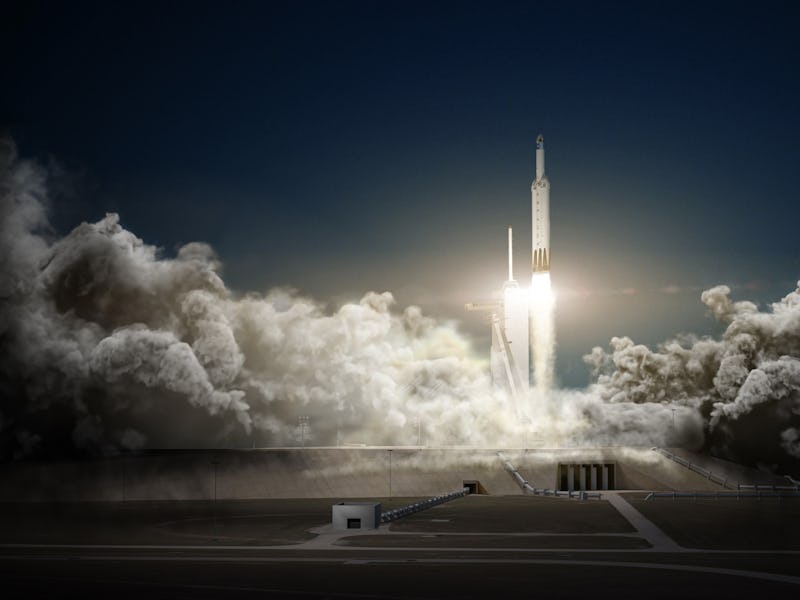SpaceX: 3 Ways the Falcon Heavy Launch Could Go Very Wrong
Who knew so many things could go wrong?

On Tuesday at 1:30 p.m. Eastern, private spaceflight company SpaceX will attempt to launch its unprecedented Falcon Heavy rocket into orbit around Mars. This will be the first test flight of the rocket that CEO Elon Musk hopes will launch supplies or people from Earth to the moon and carry large payloads into space. When it launches, the Falcon Heavy will be the most powerful rocket in operation, and if Tuesday’s test flight goes as planned, the craft will be a strong contender for future NASA contracts.
But Musk told reporters on Monday that there’s a lot that could go wrong on this test flight. He outlined at least three major things that could go wrong:
1. The Boosters Could Interfere With Each Other
Musk says it’s impossible to know exactly what could go wrong, but that he was thinking a lot about the interactions among the three core boosters — the Falcon Heavy is comprised of three Falcon 9 boosters.
“Do they have some sort of resonance that we weren’t anticipating? Do they shake together, potentially interacting one another? Going through the sound barrier, you get these supersonic shockwaves,” he said. “You can have some shockwave impingement, where two shockwaves interact and amplify the effect. That could cause structural failure as it goes transonic.” Then, he said, around Max Q — the point at which dynamic air pressure on the rocket is the greatest — the boosters could fail.
Join our private Dope Space Pics group on Facebook for more strange wonder.
Elon Musk is confident that the Falcon Heavy test flight will be successful, but admits that there's a lot of ways it could go wrong.
2. Ice From the Upper Stage Could Damage the Side Boosters
During a rocket launch, the liquid oxygen in the boosters is so cold that condensation forms on the outside of the spacecraft. As the rocket breaks loose from the Earth’s gravitational pull, its vibrations rattle this ice loose, which Musk says could be disastrous.
“We’re worried about ice potentially falling from the upper stage onto the nose cones of the side boosters. That would be like a cannonball through the nose cone,” he said. It’s just one more way in which the Falcon Heavy’s test flight relies on multiple factors out of scientists’ and engineers’ control.
Falcon Heavy concept art
3. The Boosters Might Not Separate Properly
The Falcon Heavy is much different from the more familiar Falcon 9, in that it has two side boosters that will fall away once their fuel supply is exhausted. This will be the first time the booster separation system is tested under real-world conditions, though.
“We’ve tested the separation system for the side boosters on the ground, but this will be the first time it has to operate in flight,” said Musk. “Once the second stage separates from the center booster, we’re in much more known territory.”
Assuming none of these things conspires to screw up the Falcon Heavy test flight, once the side boosters separate, the mission will be a lot like the Falcon 9 missions, which SpaceX has much more experience with. That being said, the rocket will have to pass through the Van Allen Belts, a bubble of intense radiation that surrounds Earth. This presents a host of unknowns, but Musk says even if the rocket fails, SpaceX will learn a whole lot from the Falcon Heavy test flight.